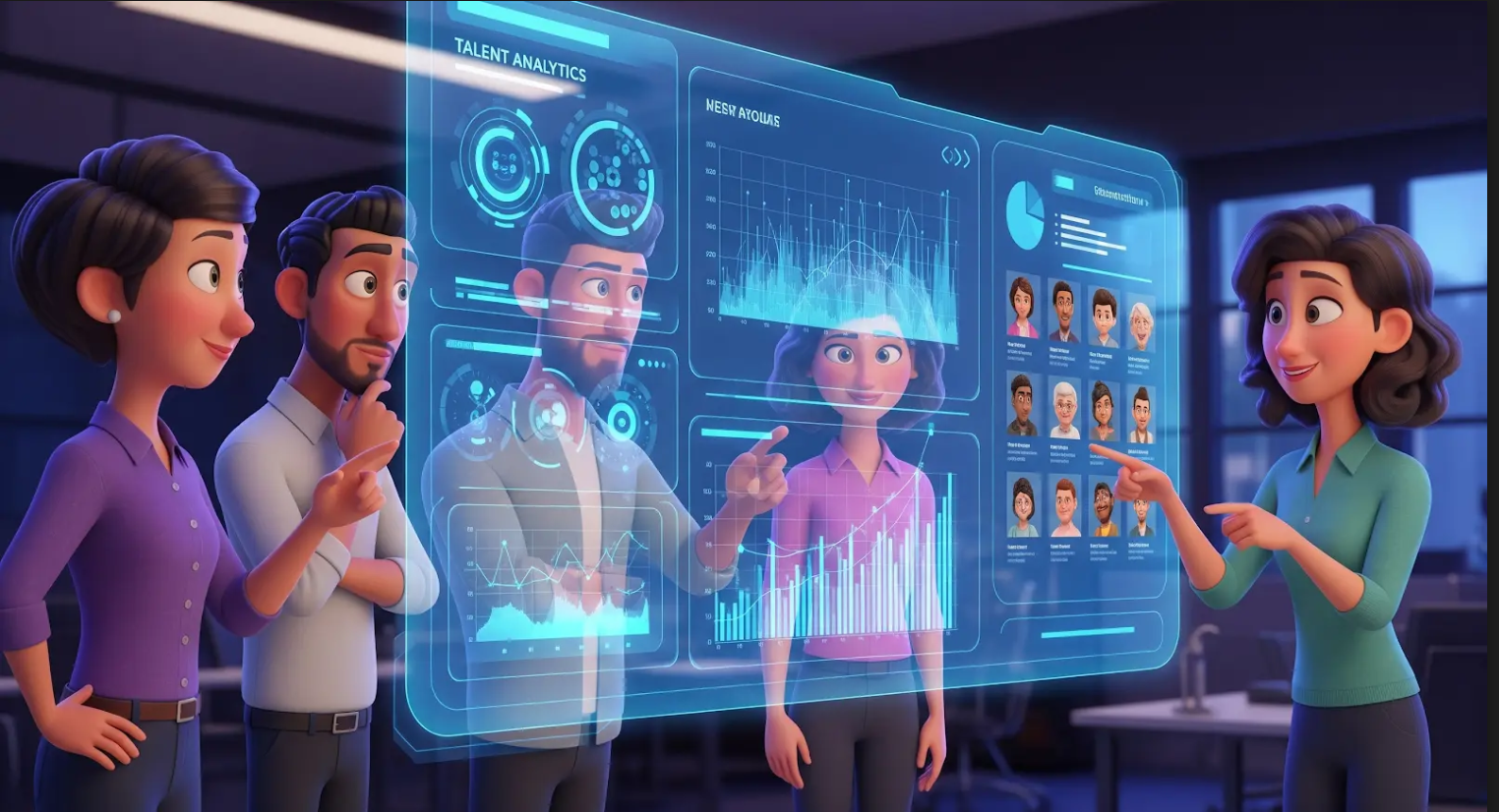Introduction
For centuries, casting has been perceived as an art – an intuitive dance between a director’s vision, a casting director’s discernment, and an actor’s raw talent.
It was a process steeped in gut feelings, chemistry reads, and the undeniable “spark” that an individual brought to a role. While these artistic elements remain fundamental, the rise of big data and advanced analytics is subtly, yet profoundly, reshaping how talent is identified, evaluated, and ultimately, selected for film and television productions.
Data-driven casting is no longer a futuristic concept; it’s an emerging reality that offers unprecedented insights into audience preferences, market viability, and even an actor’s potential return on investment.
The Evolution of Casting: From Intuition to Informed Insight
Traditionally, casting relied heavily on a subjective blend of factors: an actor’s previous work, their theatrical training, professional reputation, network connections, and the perceived “fit” for a character.
Star power was (and largely remains) a crucial driver for financing and audience draw. However, the entertainment industry is now a multi-billion dollar, globally interconnected business where every decision carries significant financial risk.
Streamers and studios are increasingly under pressure to de-risk creative investments and maximize audience engagement in an incredibly crowded content marketplace. This is where data enters the casting equation.
What Does “Data-Driven Casting” Entail?
It’s not about replacing human creativity with algorithms. Instead, it’s about augmenting human intuition with quantitative insights. Data-driven casting involves:
- Audience Analytics: Understanding who watches what, when, and how. This includes demographic data (age, gender, location), psychographic data (interests, values, lifestyle), and behavioral data (viewing habits, genre preferences, engagement with specific actors or franchises).
- Performer Performance Data: Analyzing an actor’s past performance metrics across various platforms. This goes beyond box office gross to include streaming viewership numbers, social media engagement, audience sentiment (e.g., critical reviews vs. audience scores), and even search trends.
- Market Viability Metrics: Assessing an actor’s “bankability” not just domestically but also internationally. This might involve looking at their foreign box office draw, their appeal in specific regional markets (e.g., China, India), and their ability to trigger pre-sales or tax incentives.
- Trend Analysis: Identifying emerging talent, tracking rising stars, and understanding which types of performances or personalities are currently resonating with specific demographics.
- “Audience Fit” and “Character Archetype” Matching: Using AI and machine learning to analyze character descriptions against vast databases of actor profiles, identifying potential matches based on not just physical attributes but also past roles, perceived personality traits, and audience reception.
How Data Informs Key Casting Decisions
- De-Risking Investments and Securing Financing:
For producers and studios, attaching a “bankable” star is often crucial for securing financing and distribution. Data can provide a more granular understanding of a star’s actual drawing power across different genres and territories, beyond their peak box office numbers. For instance, an actor who consistently drives high viewership on a specific streaming platform for a certain genre might be a more valuable asset than a traditional movie star whose last few theatrical releases underperformed. Sales agents use data to provide more accurate pre-sale estimates based on attached talent, directly impacting a film’s budget. - Targeting Specific Demographics and Niches:
Streaming platforms, in particular, thrive on tailoring content to specific audiences. Data allows casting directors to identify actors whose existing fan base or perceived persona aligns perfectly with a show’s target demographic. If a streamer is trying to attract Gen Z viewers, casting an actor with a massive TikTok following might be more strategic than one with a traditional filmography but limited digital presence. - Unearthing Untapped Talent:
While a significant focus is on established names, data can also highlight emerging talent. Social media metrics, indie film festival buzz, and even online acting showcases can be mined to identify actors who are gaining traction but might not yet be on the radar of traditional casting networks. This democratizes the casting process to some extent, allowing for discoveries based on genuine audience engagement rather than just industry connections. - Optimizing Ensemble Casts:
Data can even inform the synergy within an ensemble. By analyzing how audiences react to various actor pairings in previous projects, or by identifying actors with complementary social media followings, casting directors can build more cohesive and appealing casts that maximize collective star power and audience engagement. - Refining Character Archetypes and Narratives:
Beyond individual actors, audience data can inform the type of character that resonates. If analytics show a high engagement with anti-hero protagonists or specific character arcs in similar content, this can guide casting choices towards actors who have successfully portrayed such roles, or even influence character development in early stages.
The Tools and Techniques
The tools for data-driven casting range from sophisticated AI platforms to more accessible social media analytics.
- Proprietary Studio/Streamer Data: Major players like Netflix, Amazon, and Disney+ have vast internal data on viewing habits, subscriber demographics, and content performance, which directly informs their casting decisions for originals.
- Third-Party Analytics Platforms: Companies like Gracenote (Nielsen), Flixpatrol, and various social media analytics tools provide insights into content performance, talent popularity, and audience sentiment across various platforms.
- AI/ML Matching Algorithms: Some emerging platforms use machine learning to analyze scripts, character breakdowns, and actor profiles to suggest potential matches based on a multitude of data points, including past roles, sentiment analysis of reviews, and audience demographics.
- Social Listening Tools: Monitoring conversations about actors, genres, and characters on social media to gauge public interest and sentiment.
The Human Element: Art vs. Algorithm
It’s crucial to reiterate that data-driven casting is not about eliminating the casting director or the director’s artistic vision. The human element remains paramount:
- Chemistry: Algorithms cannot replicate the intangible spark between actors in a scene. Chemistry reads, improvisation, and collaborative workshops will always be essential.
- Nuance and Subtlety: A data point cannot capture the depth of emotion an actor can convey, or the unique interpretation they bring to a role.
- The “Discovery” Factor: While data can highlight rising stars, true artistic discovery often comes from seeing an actor perform live, in an unexpected role, or during an audition where they transcend expectations.
- Artistic Vision: Ultimately, the director and producer have an artistic vision for their project. Data serves as an informative tool, not a dictator of creative choices. It helps to validate or challenge assumptions, providing a more informed basis for decision-making.
The Future of Casting
As analytics become more sophisticated and readily available, data-driven casting will likely become standard practice, particularly for large-scale productions and streaming services. It will continue to provide:
- Greater Efficiency: Streamlining the initial stages of talent identification.
- Reduced Risk: Providing more reliable insights into commercial viability.
- Expanded Reach: Potentially surfacing talent from diverse backgrounds and non-traditional avenues.
However, the enduring magic of casting will always reside in the ability of human professionals to identify that undefinable quality in an actor that transcends mere metrics – the charisma, the emotional truth, the unique presence that makes a character unforgettable. Data will be the compass, but human artistry will remain the guiding star in the delicate art of bringing characters to life.















































